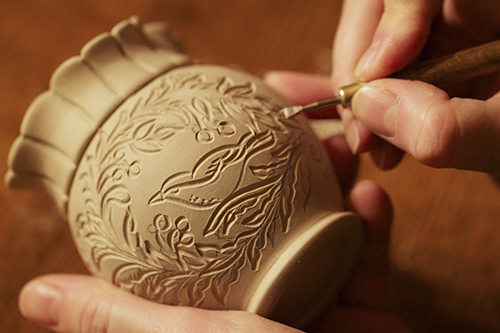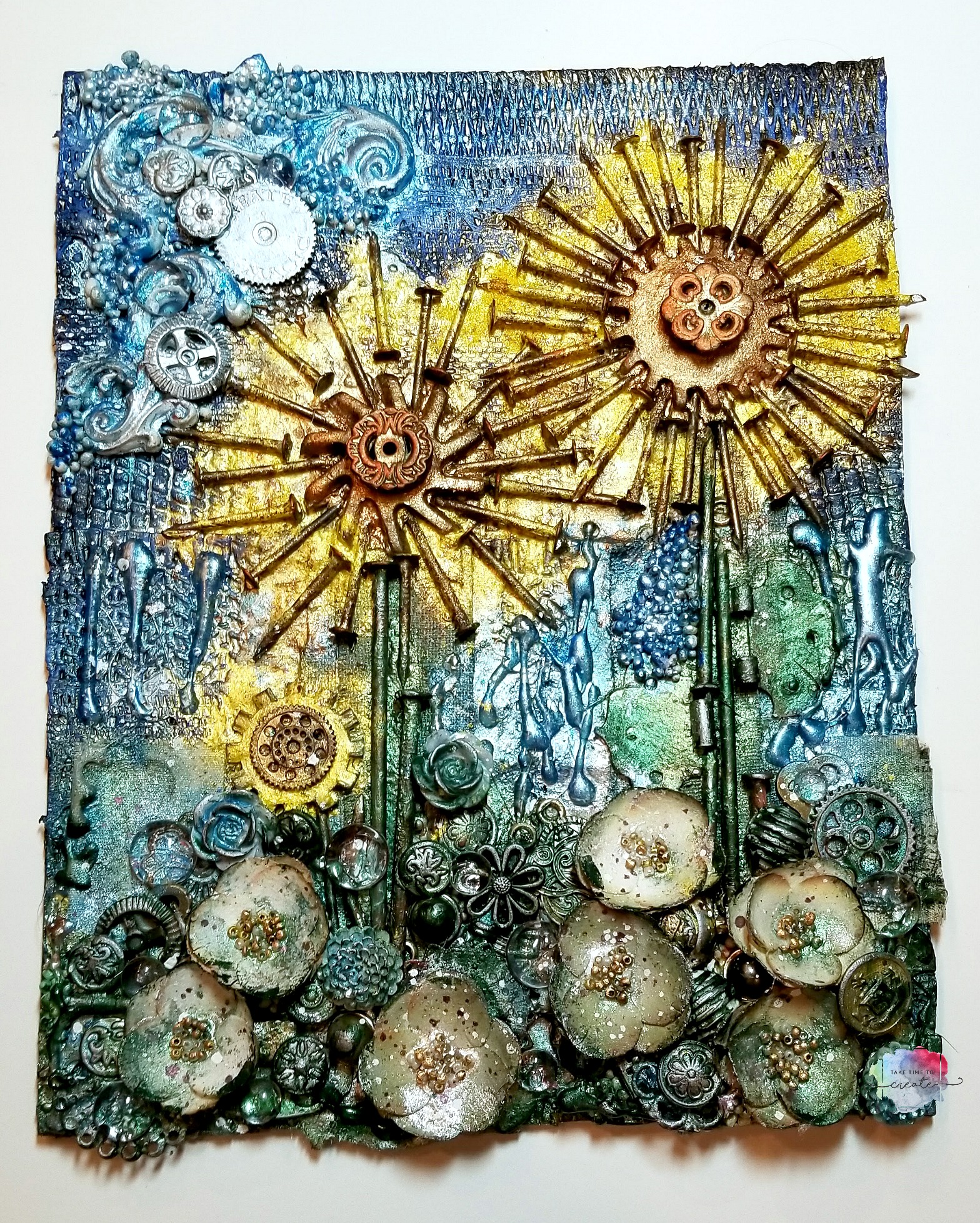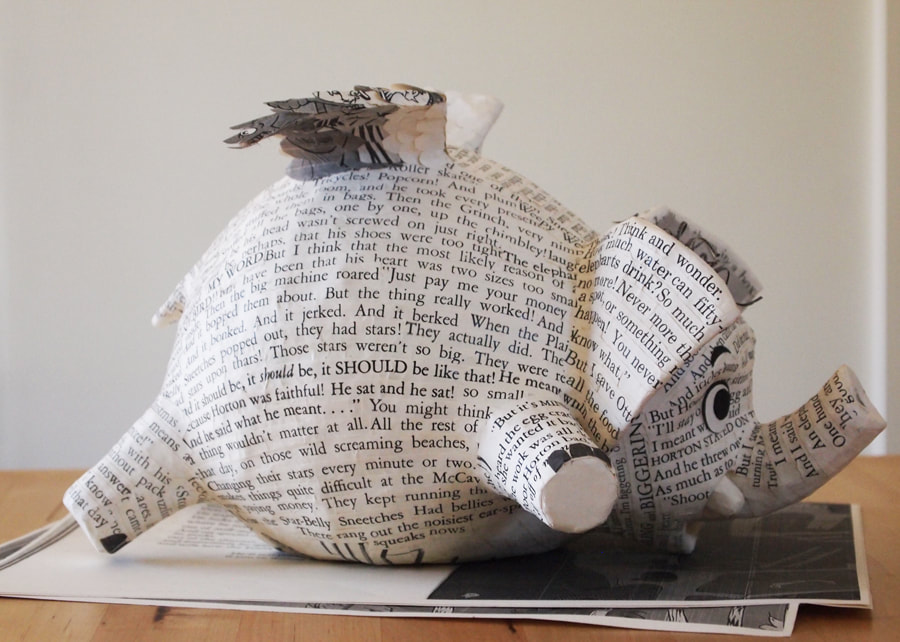This type of clay has not been fired. It has been dried and is now no longer movable however, the clay is fragile.

Greenware
This is the path the viewer's eye takes through the work of art, often to focal areas. It can be directed along lines, edges, shape, and color within the work of art.

Movement
This self-explanatory method refers to the process of adding layers or pieces of material together to build up the desired form over time.

Additive
This is the act of creating the cavity or form that carries a negative or reverse impression of an original model. Tt can be made of a rigid material, such as plaster or plastic resin or more commonly, a flexible material such as rubber.

Mold making
This defines how light or dark a given color or hue can be. This are best understood when visualized as a scale or gradient, from dark to light. The more tonal variants in an image, the lower the contrast.

Value
This is when clay is most soft. It has a high-water content and is completely moldable.

Plastic
This is the repetition of specific visual elements such as a single unit or multitude of forms. It can be used to create balance, organize surfaces in a consistent manner, or create contrast.

Pattern
This process is building up and shaping of a soft material such as clay, plaster or wax to create a form. Often making a model is the first stage in the sculptural process, leading to translation into bronze, plaster or lead, through casting.

Modeling
This technique in art creates a sculpture, or a skeleton or framework used by an artist to support a figure being modeled in soft material such as aluminum foil.

Armature
This is when a line becomes an enclosure of space, where the line forms the boundary. To put it simply, this element is any two-dimensional space. These do not have to be created with lines.

Shape
This is when clay has only 50% water content and is stiff. The clay is no longer moldable but can be carved or etched on its surface.

Leather hard or cheese hard
Adding this principal of design to an object creates a focal point, which grabs an audience's attention. It's where you want the viewer to look first, but doesn't overpower the rest of the design (or it would be out of balance).

Emphasis
This form of sculpture refers to the process of removing pieces of material to achieve the desired design. There are many materials used in the making of sculptures. Sculptural materials include wood and stone as well as wax and clay.
Subtractive
This describes artwork in which more than one material has been used . Assemblages, collages, and sculpture are three common examples of art using different material. Materials used to create this type of art include, but are not limited to, paint, cloth, paper, wood and found objects.

Mixed Media
This is one of the elements of art that refers to three-dimensional objects. Shapes are flat and have two dimensions (height and width). These have three dimensions. (height, width and depth).

Form
Once clay has been fired it is considered this type of clay.

Bisqueware
This refers to the use of visually different elements. In addition to capturing attention, contrast can guide the viewer's eye to a focal point, highlight important information and add variety, or even drama, to a design.

Contrast
This was the main idea of the 100-piece project. This process includes joining different kinds of materials together including: paper, wood, plastic, wire, string, and more.

Assembling
This ancient form of pottery is a simple way to create a pot or bowl. By using your thumb and forefinger you apply pressure to the clay and squeeze to create thin walls the shape desired .

Pinch pot
This element in a work of art refers to a feeling of depth or three dimensions. It can also refer to the artist's use of the area within the picture plane. The area around the primary objects in a work of art is known as negative, while the area occupied by the primary objects is known as positive.

Space
Clay can be "painted " then reheated in the kiln. The clay is now able to be used for eating or drinking as well as reheating in an oven or microwave. It takes on a shiny surface that can have many different colors.
Glazeware
This refers to the distribution of visual elements based on their perceived weight. Elements may be based on color, texture and space to achieve a sense of equilibrium and harmony in a composition.

Balance
This process is similar to subtractive but specifically uses tools to cut and gouge away material from a surface to create low relief.

Carving
This material and technique is made of glue and water. Commonly used to wrap around materials and will harden over time.

Paper Mache
This element is the quality of an object or substance with respect to light reflected by the object, usually determined visually by measurement of hue, saturation, and brightness of the reflected light; saturation or chroma; hue

Color